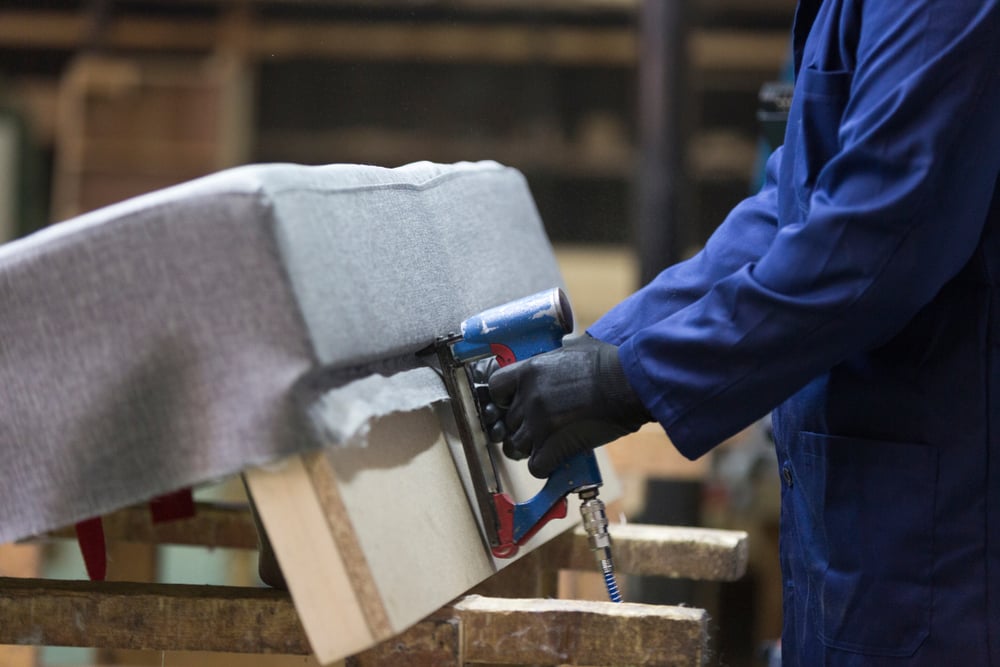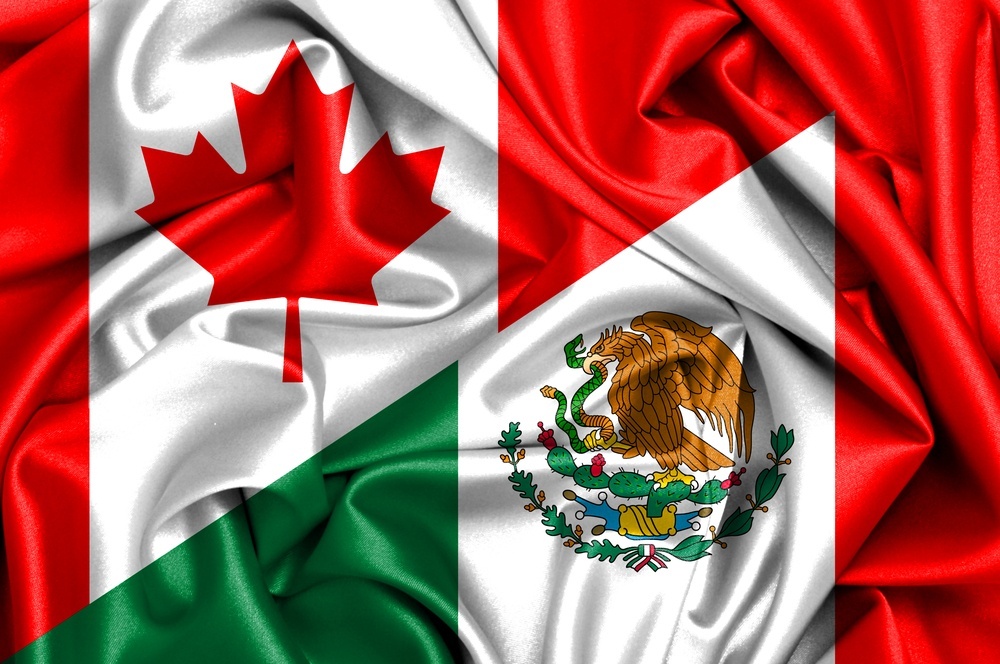Santa Fe-based Phillips Industries says its Saltillo, Mexico, ‘shelter’ plant is playing an important role in growth, competitiveness.
By Tonya Vinas
When Mexico makes headlines these days it’s usually for rare-but-shocking drug-related violence. Unfortunately, this dark spot has somewhat obscured an expanding bright spot that is helping many U.S.-based global manufacturers to stay competitive. A variety of companies have set up plants south of the border and are counting on Mexico’s proximity to the United States, cultural similarities, and highly skilled and motivated workforce to fuel growth plans that support company-wide job and community security.
Foreign direct investment in Mexico rose 9.7 percent in 2011 compared with 2010 to reach $19.44 billion. After a 5.5 percent growth rate in 2011, the Mexican economy is expected to grow 4.5 percent in 2012. Manufacturing has been a significant driver of the economy, growing 8 percent over the past year and creating 1.8 million jobs. Mexico is still considered a lower-cost option compared with the United States, but increasingly, manufacturers are putting production in Mexico for other competitive advantages that benefit the entire company, including U.S. operations.
One such company is Santa Fe Springs, Calif.-based Phillips Industries, which makes customized and off-the-shelf electronics for the transportation industry and has operated a plant in Saltillo, Coahuila, Mexico, since 2007.
Phillips Industries manufactures customized trailer harnesses at its Saltillo plant, which accounts for about 25 percent of the company’s volume. Phillips Industries first became interested in Mexico in 2006 when attending an open house at a Mexican plant operated by Daimler Truck (Freightliner in the Untied States), one of its customers. At the time, Daimler was encouraging its suppliers to site facilities in Mexico, a common way to create mutual efficiencies known as “clustering.” Simultaneously, Phillips was dealing with performance problems at a Dallas, Texas, plant that seemed to have a low probability of quick resolution.
According to Rob Phillips, Vice President of Global Operations, the decision was made to shut down the Dallas plant and move production to Mexico, and the company opted for a “shelter model” to set up and run the operation.
Fundamentally, this model mimics outsourcing, but the manufacturer maintains control of critical functions such as business processes, strategy planning, hiring decisions and product-specific parts-and-materials-procurement. The shelter company handles the administrative side of setting up and managing a plant: permitting and regulation, the importing and set-up of production machinery, utilities relationships, and even employment.
Faster is Better
Beyond cost savings, the biggest benefits of a shelter model is that manufacturers can launch production much faster, the entire process of setting up a foreign site is simplified and handled by experts, and the producer can devote resources to core competencies and serving customers.
Phillips chose The Offshore Group, which runs two industrial parks in addition to Saltillo (Guaymas/Empalme, Sonora and Guadalajara, Jalisco). Rob Phillips said the speed with which the Saltillo plant was set up and began production provided a huge advantage over going it alone.
“We began negotiating in a meeting September; we signed a contract on Halloween day; and we were up and running by the beginning of the next year,” he said. “The decision to move production was a quick decision, and The Offshore Group kept pace with us. We were a company with no experience operating in Mexico, and we were able to set up a world-class facility in a short period of time.”
Phillips said going with the shelter model shortened set-up time because The Offshore Group winnowed job applications to those that matched Phillips’ criteria and needs, imported and set up production machinery, and handled all other “localized” aspects of setting up shop in Mexico.
“They were able to handle all of the details that we had no experience with.”
When companies such as Phillips Industries can shorten set-up time for a new facility, it can begin fulfilling customer orders sooner, which in turn shortens the return-on-investment period for up-front costs. As a result, the new operation begins contributing to profitability and cash flow sooner.
Having a shelter facility in Mexico shortens cycle time on other key metrics compared with locating a facility in an overseas location, such as Asia. For example, Rob Phillips said the lead time for Phillips’ customized trailer harnesses that are made in Saltillo is four to five times shorter than competitors’ lead times. Both the shorter shipment route (no ocean to cross for North America) and similarity of time zones and cultural factors play into that advantage. It is much easier to align internal processes when a foreign facility is staffed with English-speaking professionals who are working in the same time zone.
For example, Phillips Industries runs its R&D program out of its California headquarters, but engineers there work closely with engineers in Saltillo to determine manufacturability of new products, input costs, and other elements that are part of bids for new business.
Mexican Workforce Advantages
Phillips Industries uses lean manufacturing techniques, and Rob Phillips said he has had no problem finding enough properly trained and educated employees. In fact, they are more educated than U.S. professionals in some ways.
“We've hired several people right out of college who have been directly educated on lean purchasing for the automotive industry, and I've never seen that anywhere else in the world," Phillips said. "If I need to hire someone, I have an incredible pool of people who are interested and have the experience we need. I'm not having to look for a production manager for six months. I look maybe for a week and a half. I might get four or five very qualified resumes of English-speaking people who really understand lean and are what I am looking for."
In some cases employees work directly for the manufacturer while in others they work for the shelter company. Phillips’ employees work for The Offshore Group on paper, but Rob Phillips said they are just like his own employees.
"The shelter actually employs them, but for all intents and purposes, they are Phillips employees. They get a check from the shelter, but they are very loyal to our company and invested in the business."
For companies looking for a shelter partner, a crucial differentiator can be workforce support. Whether the employees work for the client company or the shelter company, there should be a strong training-and-education offering from the shelter company. Manufacturers need an abundance of skilled workers in order to build long-term viability, and such workers are going to be in higher demand and shorter supply in the developed world in the near future.
According to Armando Lee, general manager for The Offshore Group’s Mexican subsidiary, Maquilas Tetakawi, S.A. de C.V., the company created a manufacturing-technology training center, where it can train on a variety of skills such as CNC machining, plastic injection, metrology, lean manufacturing and Six Sigma. Open courses are offered for client employees and customized training is developed as requested by clients. In most cases, the state government provides financial support.
Another initiative started in 2010 and offers teenagers attending public technical schools the opportunity to apprentice at client companies. The program runs for two years and includes four days of hands-on education at a manufacturing site each week and one day of classroom instruction. About 100 students are enrolled, and indications are that the program will be highly successful. Already, one company has offered a scholarship to study engineering to one of the students.
Another program, Metromatematicas, addresses skilled labor needs on a deeper level. The Offshore Group is paying for public school teachers to be trained on how to teach applied mathematics. (Traditionally, only math theory has been taught.) The company also lobbied the regional governor to support the program and won his agreement to supply public money to build applied math laboratories at schools. The labs will include modern production equipment that is used in aerospace and other industries.
“We wanted to give something back to the community, and we decided the best way to do this is through contributing to the education of future generations,” Lee said. “This effort is long term.”
Manufacturing Facilities Support
Another important aspect of choosing the right shelter company is how well facilities are supported on a day-to-day basis. Is there security? Who makes the property tax payments? How thorough and responsive are maintenance teams? How involved will the client have to be the day-to-day tasks of maintaining smooth operations?
Ideally, manufacturers should look for a complete, turnkey solution that allows them to focus on their products and not plant maintenance. For example, Phillips has been able to concentrate on building a pool of local strategic suppliers for materials and components—those that add to customer value—while The Offshore Group handles less-strategic MRO procurement.
Additionally, how much property does the shelter company have and how much is still available? This can be an important consideration for growth.
“We have had so much success in Mexico that we are constantly looking at what products can we move there,” said Rob Phillips. “There are discussions of moving some of our products for European customers from Shanghai to Mexico because it cuts lead time in half.”
Subscribe
Sign up and stay informed with tips, updates, and best practices for manufacturing in Mexico.





